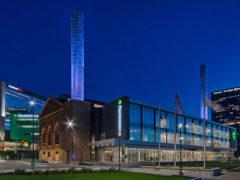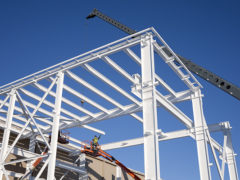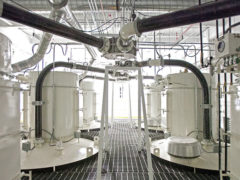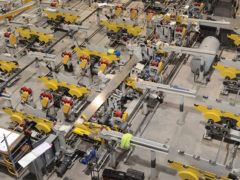
Virtual Design and Construction
Technology has transformed every aspect of business including construction services. The Rudolph Libbe Group has consistently stayed ahead of the curve with use of the latest available software to help deliver successful project outcomes. Our Virtual Design and Construction team improves design to help provide faster project delivery.
Issues that could arise in the field and cause costly delays are resolved in the design phase saving time and money. We utilize 3D laser scanning, Building Information Modeling (BIM), Advanced Grade Technology (AGTEK), and 3D concrete and masonry software.
Laser Scanning
A 3D laser scanning system streamlines difficult “in-place” measurements by generating a precise and accurate 3D computer image of a structure, piece of equipment or an entire area. Laser scanned images form a point cloud that is imported into CAD software.
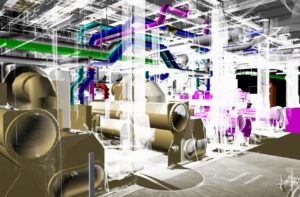
Benefits of laser scanning for a project:
- Most measurements are taken from the ground
- Faster and more accurate measurements
- Done around ongoing operations
Laser scanning provides data for everything from detailed surveys of existing conditions, creation of and accuracy verification of as-built drawings, manufacturing and reverse engineering, to interference checking, visualization and animation development.
Building Information Modeling (BIM)
BIM allows design and construction professionals to build a computer model of a structure prior to physical construction. This computer model has several important advantages over traditional drawings including:
Improved Design
- Test “what if” scenarios to optimize the design for its intended use
- Virtual “fly-throughs” allow visualization prior to construction
- More accurate construction documents
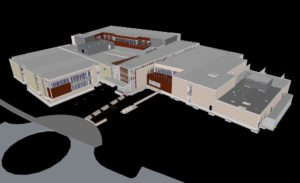
Reduced Cost
- Fewer requests for information (RFI’s), change orders and rework
- Lower general conditions costs due to improved schedule
- Improved safety due to better understanding of building system installation
Faster Schedule
- Pre-fabricated materials can be ordered much earlier
- Clash detection reduces delays due to rework
Unlike traditional 2D projects, collisions among structural, mechanical, electrical, plumbing and fire protection systems (a pipe running through an air duct, for example) can easily be detected by running a clash detection program. In a traditional 2D project, these collisions are difficult to identify and are often overlooked.
By using BIM, architects, engineers, owners and builders can all work from the same model, saving any changes to a central location. This central repository of all project information facilitates collaboration and streamlines the design and construction process.
Advanced Grade Technology (AGTEK)
AGTEK software uses topographical survey data to create a terra-model of the project site. This allows us to more accurately estimate the amount of earth to be moved, and can significantly reduce the cost and schedule impact associated with traditional survey and staking crews.
Coordinates from the terra-model can be used by our GPS Laser Bulldozer to automatically execute planned cuts and fills. AGTEK’s precision and accuracy ensures that the project site is graded correctly on the first pass, resulting in an improved project schedule and reduced overall site work cost. Rudolph Libbe Inc. is now able to complete in a few hours what used to take 5-7 days. Your project benefits with an improved site work schedule as well as reduced equipment and operator time and costs.
3D Masonry
Tradesmen’s masonry software allows Rudolph Libbe Inc. to cut estimating time in half and eliminate costly mistakes by ordering materials and supplies correctly the first time. Working similar to BIM you can see the actual wall 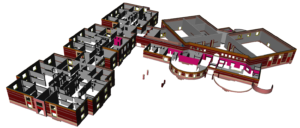 section as it’s being built, zoom in and walk through to see the work at any elevation as well as view the building in a 3D perspective both outside and inside.
section as it’s being built, zoom in and walk through to see the work at any elevation as well as view the building in a 3D perspective both outside and inside.
3D Concrete
Tekla software is used to quickly and easily create accurate, constructable 3D concrete models. This program allows us to show different pour layout associated with the construction schedule.
Experience
With substantial proven experience, RLG has completed projects spanning a variety of provided services and solutions.
-
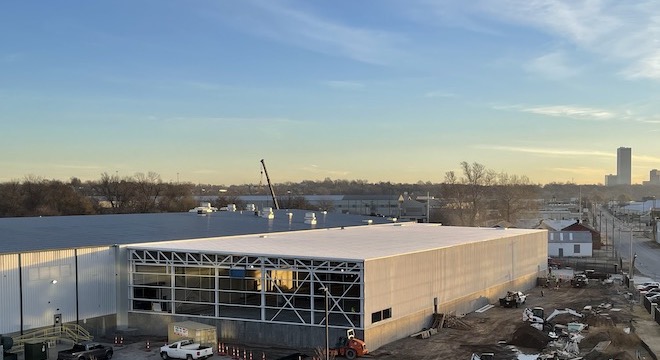
Adjuvants Unlimited design/build state-of-the-art production facility
GEM Inc.'s Guided Process Solutions design/build system proves best solution for Adjuvants Unlimited
-
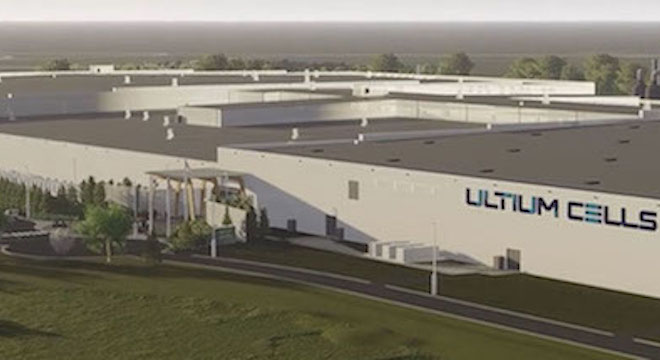
Ultium Cells EV battery plant
The Rudolph Libbe Group Northeast Ohio operations self-performed multiple trades at Ultium Cells in Lordstown, Ohio
-
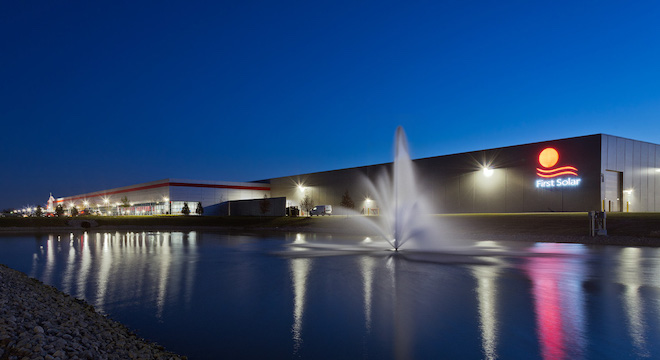
RLG supports fast-track expansion for First Solar PGT2
New 1.1 million-square-foot manufacturing facility completed in just 12 months
-
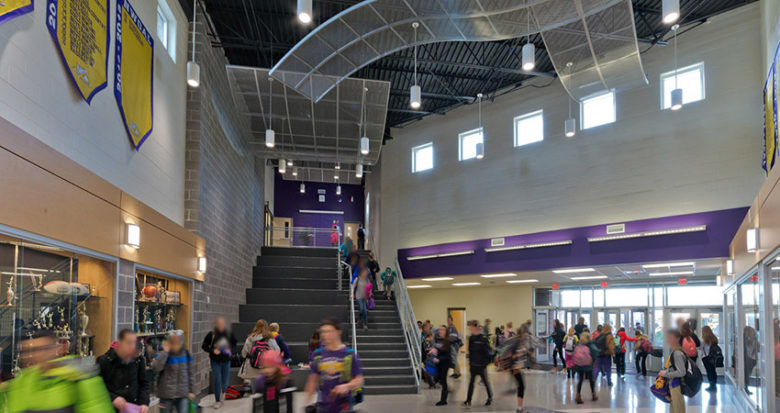
Bryan City Schools Construction Management
Construction of a combined middle and high school along with renovations to existing facilities
-
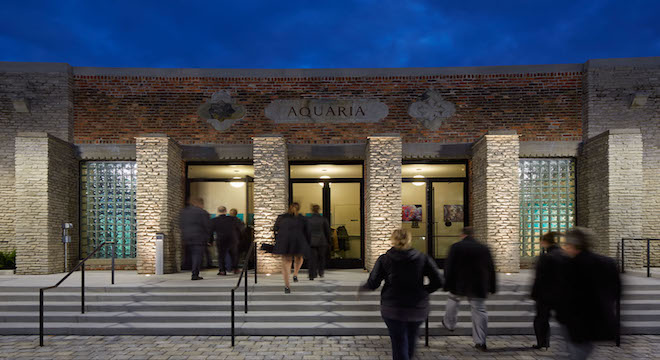
Toledo Zoo Aquarium
A 21st-century facility in an historic structure
-
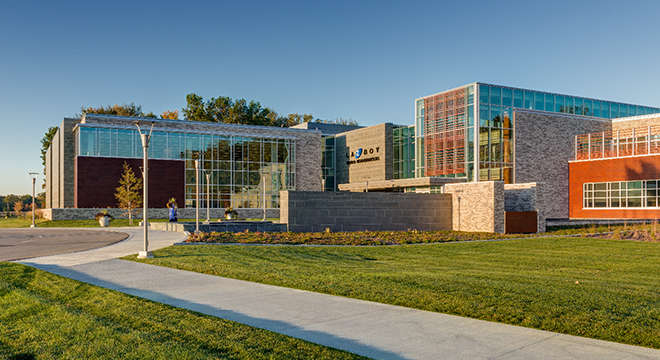
La-Z-Boy Headquarters Design/Build
200,000-square-foot, cutting edge building reflects a bright future
-
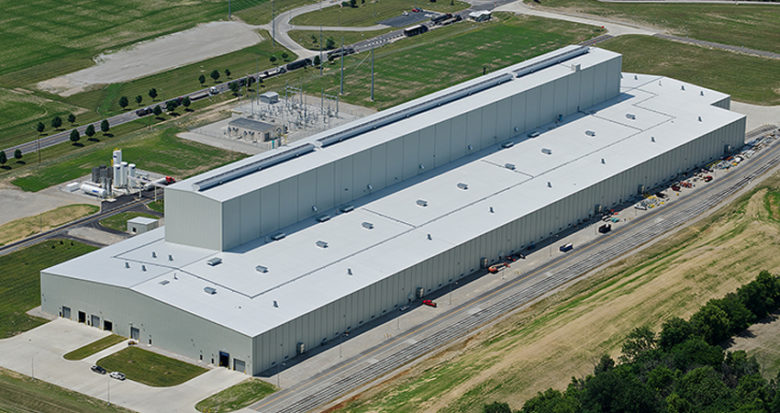
PRO-TEC Continuous Annealing Line Facility Design/Build
Two-year build performs perfectly on startup day
-
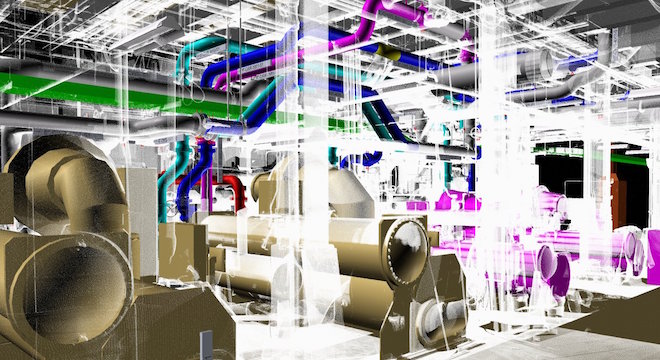
Marathon Petroleum Laser Scanning
Fast and accurate measurement speeds the project timeline
-
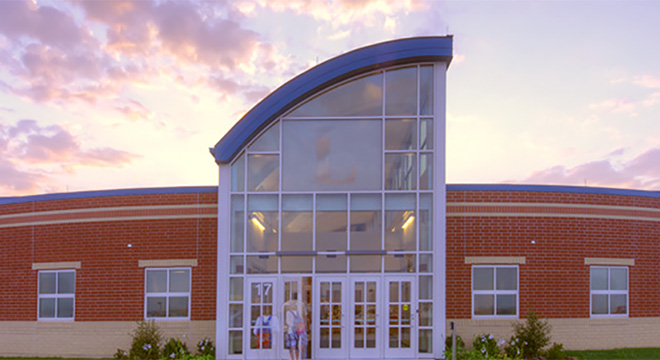
Lake High School Design/Build
First public high school in Ohio with design/build
-
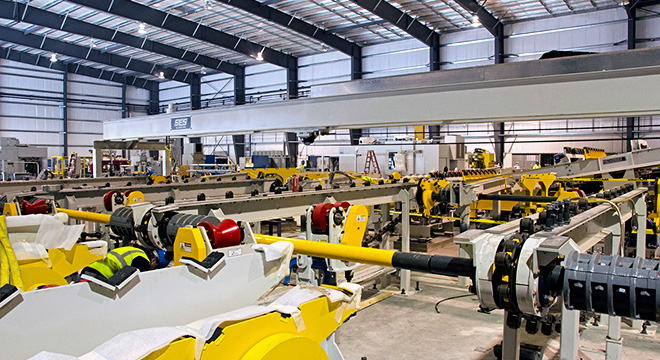
VAM-USA Facility Design/Build
Value engineering review and BIM save significant money
-
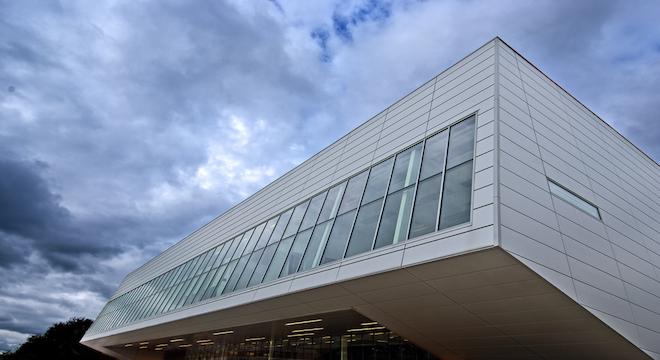
BGSU Wolfe Center Theater Construction
A state-of-the-art and dramatic facility
-
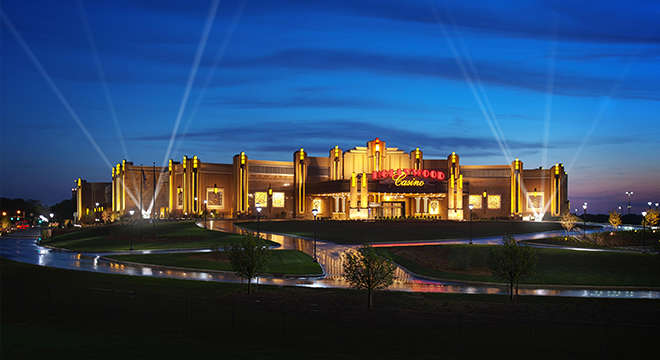
Hollywood Casino Construction
285,000 sq. ft. of remarkable recreation


